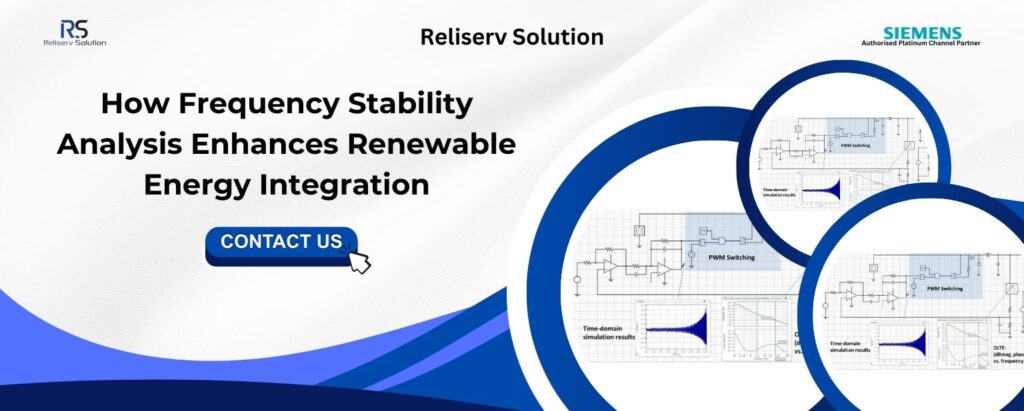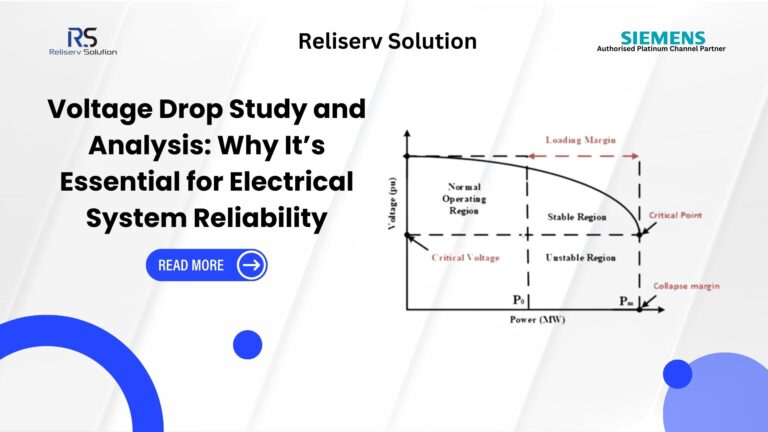Integrating renewable energy sources into modern power grids presents both opportunities and challenges. As the demand for sustainable energy increases, ensuring grid stability remains a critical concern. One of the key aspects of power system reliability is Frequency Stability Analysis. This analytical approach evaluates how fluctuations in grid frequency impact system performance, ultimately improving the efficiency of renewable energy integration. Renewable power sources can destabilize the grid without proper frequency control, leading to inefficiencies or even power outages. Therefore, conducting a frequency stability analysis study is crucial to maintaining a robust and resilient power system.
Introduction to the Frequency Stability Analysis Study
Frequency Stability Analysis refers to the assessment of power grid frequency variations and their impact on overall system performance. A stable frequency ensures that power supply and demand remain balanced, preventing issues like blackouts or excessive power losses. Renewable energy sources such as wind and solar introduce variable power generation, making it more challenging to maintain frequency stability.
A frequency stability analysis study helps utilities and grid operators understand how these fluctuations impact the system. With this analysis, engineers can implement control mechanisms, such as automatic generation control (AGC) and demand response strategies, to mitigate risks and maintain stability.
The concept of frequency analysis emerged in the mid-1960s, marking a significant advancement in power system studies. Frequency instability arises due to several factors, including poor coordination of operational control, protection device failures, equipment response limitations, and inadequate generation reserves. Given the non-linear nature of electrical power systems, classifying different stability challenges has become essential for effectively addressing power system disturbances. To analyze instability and develop effective solutions, it is crucial to accurately estimate the scale and impact of disturbances.
Importance of Frequency Stability Analysis
A frequency stability study evaluates frequency and phase fluctuations in both the time and frequency domains. This analysis plays a critical role in power system operation and planning, especially with the rising electricity demand. Maintaining load-generation balance is essential to prevent the system from fragmenting into isolated power islands.
Key benefits of frequency stability analysis include:
- Determining whether a power system remains stable from a frequency perspective
- Establishing threshold settings for under-frequency load shedding protection
- Ensuring stability in isolated island grids, which are highly vulnerable to disturbances such as generation loss or load fluctuations

The Importance of Frequency Stability
- Managing Fluctuations in Power Generation: Renewable energy sources generate electricity based on natural conditions. For instance, wind power depends on wind speed, while solar power varies with sunlight intensity. These fluctuations impact grid frequency, making Frequency Stability Analysis essential for maintaining balance.
- Enhancing Grid Reliability: A stable grid frequency ensures that all connected systems function smoothly. Conducting a frequency analysis study helps predict potential instabilities and implement corrective measures before they affect power distribution.
- Reducing Power Losses and Blackouts: Frequency instability can lead to power outages or increased operational losses. Proper analysis enables utilities to improve response times and minimize downtime.
- Optimizing Energy Storage and Demand Response: With the right Frequency Stability Analysis Provider in Mumbai, utilities can develop better energy storage solutions and demand response programs. These strategies help manage frequency variations efficiently.
Steps Involved in Frequency Stability Analysis Study
- Data Collection and System Modeling: The first step in frequency stability involves collecting real-time and historical grid performance data. Engineers create models that simulate frequency responses under different scenarios.
- Assessing Frequency Variations: By analyzing fluctuations in grid frequency, experts determine whether the system is stable. A frequency analysis study identifies weak points in the grid where frequency deviations occur frequently.
- Developing Control Strategies: Once potential issues are identified, the next step is to design and implement control mechanisms. These may include adjusting generation schedules, optimizing battery storage, or improving load management strategies.
- Testing and Validation: Before applying solutions on a large scale, utilities must test their effectiveness. This phase involves running simulations and real-time tests to ensure that the recommended changes lead to improved grid stability.
How Frequency Stability Analysis Enhances Renewable Energy
- Improving Renewable Energy Grid Synchronization: Maintaining synchronization between renewable sources and the grid is crucial. A frequency analysis study helps align power generation with grid demand, reducing instances of frequency deviations.
- Facilitating Hybrid Energy Systems: Hybrid energy systems, which combine solar, wind, and battery storage, require effective frequency management. Frequency Stability helps integrate these sources seamlessly, ensuring optimal grid performance.
- Increasing Efficiency of Energy Storage Solutions: Energy storage plays a key role in maintaining grid stability. By working with a Frequency Stability Analysis Provider in Mumbai, utilities can enhance battery storage efficiency, ensuring excess energy is stored and released when needed.
- Enhancing Grid Resilience Against External Disruptions: Extreme weather events, cyber threats, and equipment failures can impact grid stability. Frequency Stability ensures that renewable energy grids remain resilient against such disruptions, providing a reliable power supply.
Cost Considerations for Frequency Stability Analysis
Understanding the Frequency Stability Analysis Cost is essential for utilities and industries looking to integrate renewable energy efficiently. The cost of frequency analysis depends on various factors, including:
- The size and complexity of the power system.
- The tools and technologies used for data collection and modeling.
- The level of expertise required to conduct the study.
- Implementation of corrective measures post-analysis.
Investing in Frequency Analysis provides long-term benefits by reducing downtime, preventing grid failures, and optimizing energy resources. Companies can collaborate with a Frequency Stability Analysis Provider in Mumbai to get customized solutions that fit their budget and requirements.
Selecting the Right Frequency Stability Analysis Provider in Mumbai
Choosing the right provider ensures a comprehensive and accurate frequency stability analysis study. Consider the following factors while selecting a Frequency Stability Analysis Provider in Mumbai:
- Expertise and Experience: Look for providers with experience in analyzing renewable energy grids and implementing stability solutions.
- Advanced Technology and Tools: Ensure the provider uses state-of-the-art simulation and modeling tools for precise frequency assessments.
- Cost-Effectiveness: Compare different providers to determine the most cost-effective solution while ensuring high-quality analysis.
- Client Testimonials and Case Studies: Review previous projects and client feedback to gauge the provider’s reliability.
Conclusion
As renewable energy adoption grows, maintaining grid stability remains a top priority. Frequency Stability Analysis plays a vital role in ensuring seamless integration, reducing power losses, and enhancing system reliability. A well-executed frequency stability analysis study allows utilities to manage frequency deviations effectively and improve overall grid performance.
For businesses and power utilities, partnering with a Frequency Stability Analysis Provider in Mumbai ensures customized solutions tailored to their unique grid challenges. Although Frequency Stability Analysis Cost may vary, the long-term benefits far outweigh the investment, making it an essential step toward a stable and sustainable energy future.
By prioritizing Frequency Stability Analysis, we can accelerate the transition to renewable energy while maintaining a resilient and efficient power grid.
Reliserv Solution is an authorized distributor and provider of Power System Studies and is a recognized Platinum Channel Partner of Siemens. Our headquarters are in Mumbai, Maharashtra, and we provide a wide range of services and tailored solutions to help different panel builders and industries satisfy their needs. If you have any queries or worries concerning the Frequency Stability Analysis Studies cost or suppliers, please contact us by email at [email protected] or by phone at +91 7506112097. For additional information about Frequency Stability Analysis, which is a component of their cutting-edge Power System Studies, click here.



